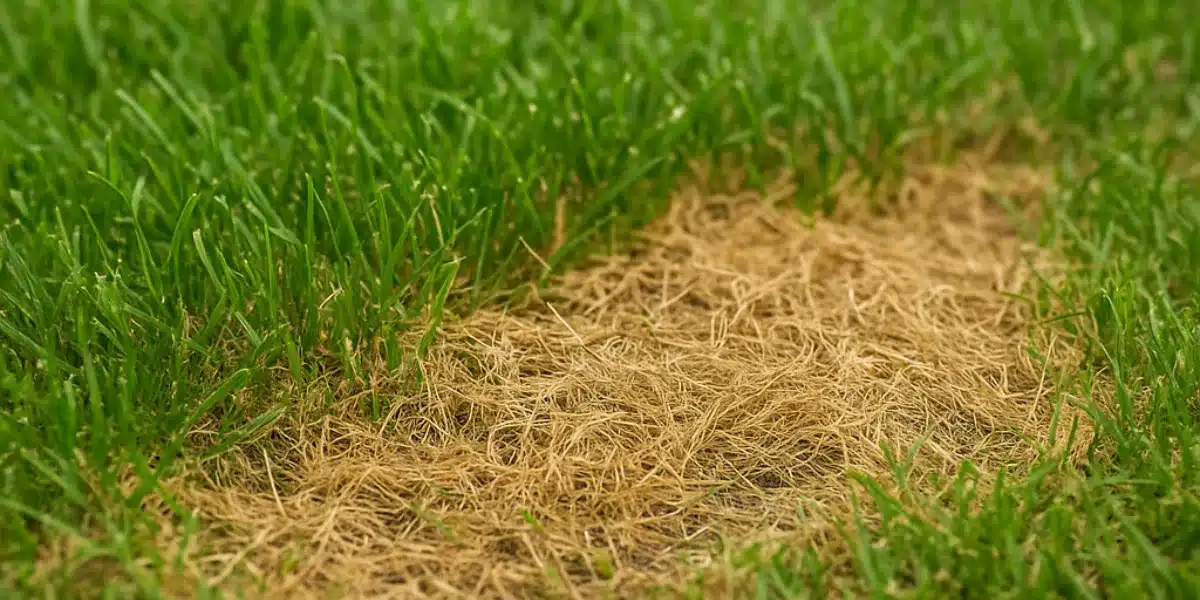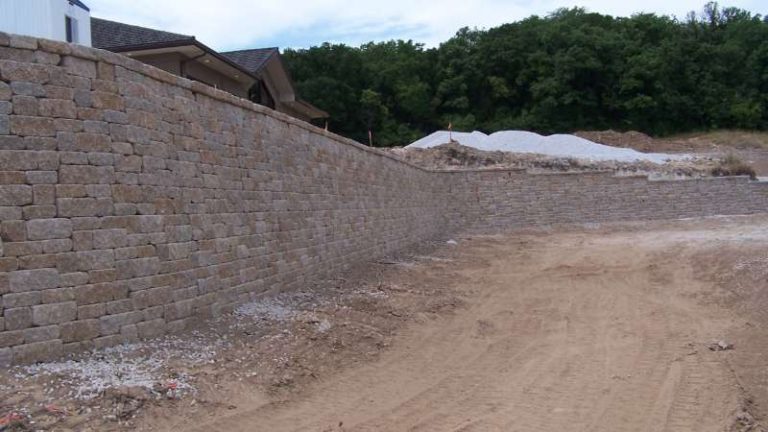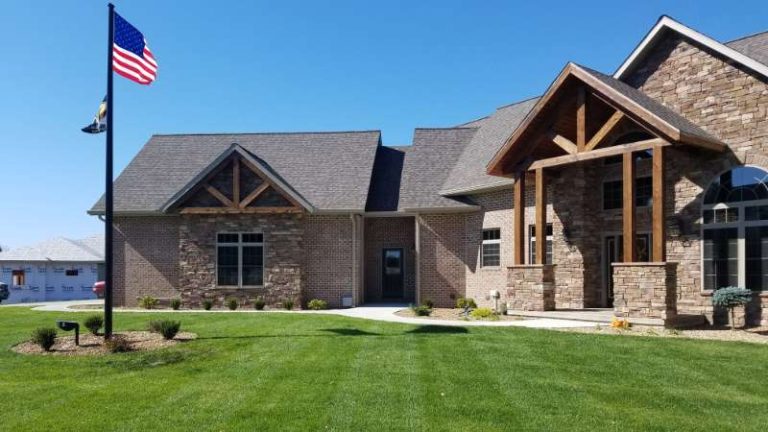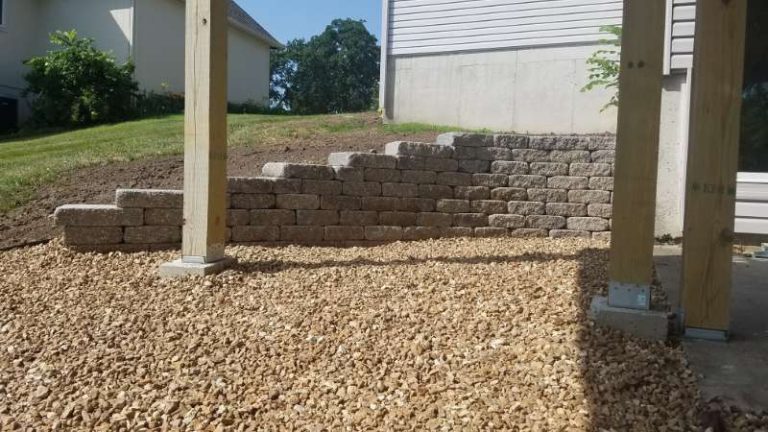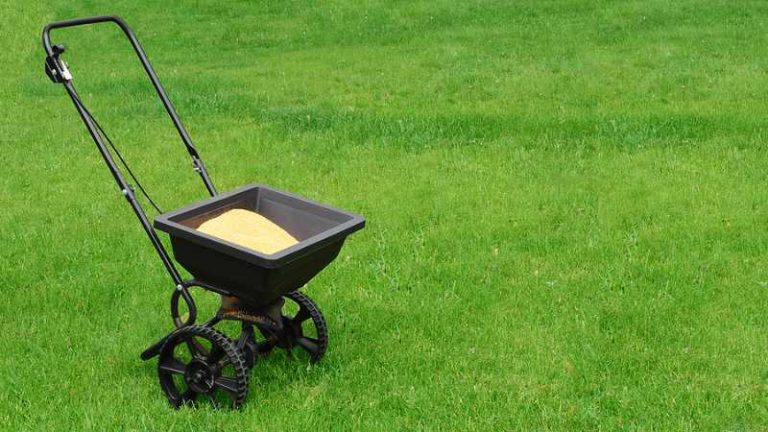What Causes Lawn Fungus and How to Treat It Fast
Lawn fungus can strike quickly—sometimes overnight—and leave unsightly brown patches, thin areas, or discoloration in your otherwise healthy yard. In Missouri’s warm, humid climate, fungal diseases are a common problem, especially during late spring through early fall. But the good news is that with early identification and the right treatment plan, most lawn fungi can be stopped in their tracks.
At S&T Landscaping, we help homeowners throughout the Sedalia area diagnose and treat turf diseases efficiently—while also identifying the underlying cause so it doesn’t keep coming back.
Common causes of lawn fungus
Lawn fungus often emerges when your turf is under stress and the environment favors fungal growth. In Central Missouri, where hot, humid summers are the norm, these conditions can develop quickly—especially if your lawn care routine isn’t adjusted for the season.
At S&T Landscaping, we’ve treated fungal outbreaks across Sedalia, Pettis County, and the Lake of the Ozarks region—and we consistently see the same underlying issues.
1. Excess moisture
Too much water is one of the most common reasons fungus takes hold.
-
-
- Overwatering or frequent shallow watering creates consistently damp conditions that fungi love.
- Poor drainage or compacted soil causes water to pool on the surface instead of draining, especially in clay-heavy Missouri soils.
- Morning dew that lingers too long can keep grass blades wet into the late morning or afternoon, accelerating fungal growth.
-
Even a few days of overly wet conditions can create the perfect environment for diseases like brown patch or dollar spot to spread.
2. High humidity and warm temperatures
Missouri summers are known for their humidity—and that’s a major contributor to turf fungus.
-
-
- Daytime temperatures in the 80s and 90s, combined with high humidity, are prime conditions for fungi to multiply.
- Warm nighttime temperatures above 60°F prevent grass from fully drying, especially after rain or irrigation.
-
These temperature and moisture patterns are especially common in June through early September, making it a high-risk time for lawn disease.
3. Improper mowing habits
Mowing seems simple, but mistakes here can leave your lawn vulnerable.
-
-
- Cutting your grass too short, also known as scalping, stresses the turf and exposes soil to fungal spores.
- Using dull mower blades tears the grass rather than slicing it cleanly, creating jagged edges that are more susceptible to infection.
-
Maintaining your mower and mowing at the correct height (usually 3–4 inches for cool-season grasses in Missouri) is essential for disease resistance.
4. Thatch buildup
Thatch is the layer of dead stems, roots, and debris between the soil and living grass.
-
-
- Excess thatch (over ½ inch thick) creates a barrier that traps moisture and limits air circulation at the soil level.
- This warm, damp layer is a breeding ground for fungi and can prevent fungicides or nutrients from reaching the soil effectively.
-
At S&T Landscaping, we often pair dethatching with aeration and overseeding to help break the cycle of recurring disease.
5. Nutrient imbalances
Healthy, well-fed lawns are naturally more disease-resistant.
-
-
- Low nitrogen levels can cause weak, thin grass that struggles to recover from stress or injury.
- Uneven fertilization—too much in some areas, too little in others—creates inconsistent growth and weak patches that are prone to fungus.
-
A professional soil test can help pinpoint exactly what your lawn is missing and allow us to tailor a fertilization program to restore balance.
6. Soil compaction
Compacted soil is a common issue in Central Missouri, especially in high-traffic yards or lawns with heavy clay content.
-
-
- Compacted soil reduces root growth, limiting your lawn’s ability to take up water and nutrients.
- It also increases surface water pooling, which feeds fungi and suffocates roots.
-
Our team often recommends core aeration in the fall to relieve compaction and allow your grass to breathe, drain, and grow stronger.
Signs your lawn may have a fungus problem
Lawn fungus can be difficult to diagnose at first, but there are telltale signs that indicate a turf disease may be present. If you're noticing any of the following symptoms on your property in or around Sedalia, it may be time to take action:
-
- Circular or irregular patches of discolored grass
Brown, yellow, or gray areas that gradually expand—often caused by brown patch, dollar spot, or similar turf diseases. - Thinned or matted grass in the morning dew
Sections of your lawn may appear flattened, sticky, or webbed with fine white threads (mycelium), especially in humid conditions. - Slimy, moldy, or fuzzy growth on grass blades
Visible fungal residue may appear as white powder, black soot, or slimy coatings on individual blades. - Persistent discoloration despite proper care
If parts of your lawn are declining even with consistent watering, mowing, and fertilizing, fungus may be interfering with nutrient uptake. - Spots or streaks on individual blades
Look for small lesions, spots, or streaks in brown, purple, or yellow—these often appear before larger damage becomes visible.
- Circular or irregular patches of discolored grass
If your lawn was once healthy but has recently declined without an obvious reason, there’s a good chance fungus is to blame. S&T Landscaping can diagnose the problem quickly and recommend a customized treatment plan to restore your turf.
Fast treatment options for lawn fungus
When it comes to lawn fungus, fast action makes all the difference. At S&T Landscaping, we specialize in identifying and treating turf diseases before they spread—helping homeowners in Sedalia and surrounding areas protect their lawns and avoid costly damage. Here’s how we handle it:
-
- Step 1: Identify the specific type of fungus
Not all fungi are the same. Common types in Central Missouri include:-
- Brown patch – often appears in hot, humid conditions
- Dollar spot – causes small, sunken patches of tan grass
- Red thread – creates pink or reddish fibers in affected areas
We start with a thorough, on-site lawn inspection to ensure the right diagnosis and a tailored treatment plan.
-
- Step 2: Apply a targeted fungicide
Once we identify the disease, we apply a commercial-grade fungicide:-
- Formulated for the specific fungus in your lawn
- Safe for pets, people, and pollinators when applied properly
- Applied with professional timing to stop the spread and protect surrounding turf
-
- Step 3: Optimize your mowing and watering habits
Lawn care practices play a major role in both causing and curing fungus. We’ll guide you through:-
- Watering deeply but less often (preferably in the early morning)
- Mowing at the correct height for your specific grass type
- Sharpening mower blades for a clean cut that doesn’t tear the grass
-
- Step 4: Improve airflow and soil health
Fungi thrive in stagnant, compacted conditions. We can help reduce thatch buildup and promote stronger turf with services like:-
- Core aeration to break up compacted soil
- Dethatching to remove excess organic buildup at the surface
- Topdressing with compost to improve microbial activity and drainage
-
- Step 1: Identify the specific type of fungus
With the right combination of treatment and lawn care adjustments, most fungal outbreaks can be stopped quickly—and your lawn can bounce back healthier than ever. S&T Landscaping is here to help every step of the way.
Preventing lawn fungus in the future
The best way to treat fungus is to avoid it altogether. Here are a few of the proactive lawn care services we offer to prevent future outbreaks:
-
- Lawn aeration to relieve compaction and improve water flow
- Fertilization programs tailored to your lawn’s needs
- Irrigation system checks to avoid overwatering
- Mowing guidance to ensure proper practices year-round
If your lawn has been affected by fungus in the past, we’ll develop a custom seasonal care plan to strengthen it and prevent recurrence.
Proudly serving Sedalia and surrounding Missouri communities
S&T Landscaping provides professional lawn care, disease diagnosis, and turf management services in:
-
- Sedalia
- Pettis County
- Benton County
- Warsaw
- Osage Beach
- Lake Ozark
- Camdenton
- Sunrise Beach
- Laurie
- Other surrounding towns throughout Central Missouri
Get expert help fast—before the damage spreads
Call Now to Restore Your Lawn’s Health
If your lawn is showing signs of fungus, don’t wait until it spreads. Contact S&T Landscaping today for a fast, professional diagnosis and effective treatment. Our team will restore your lawn and protect it from future outbreaks—backed by years of experience serving homeowners across Sedalia and Central Missouri.
Call now or request a free estimate online. We’re here to help you grow a healthier, greener lawn—without the guesswork.

